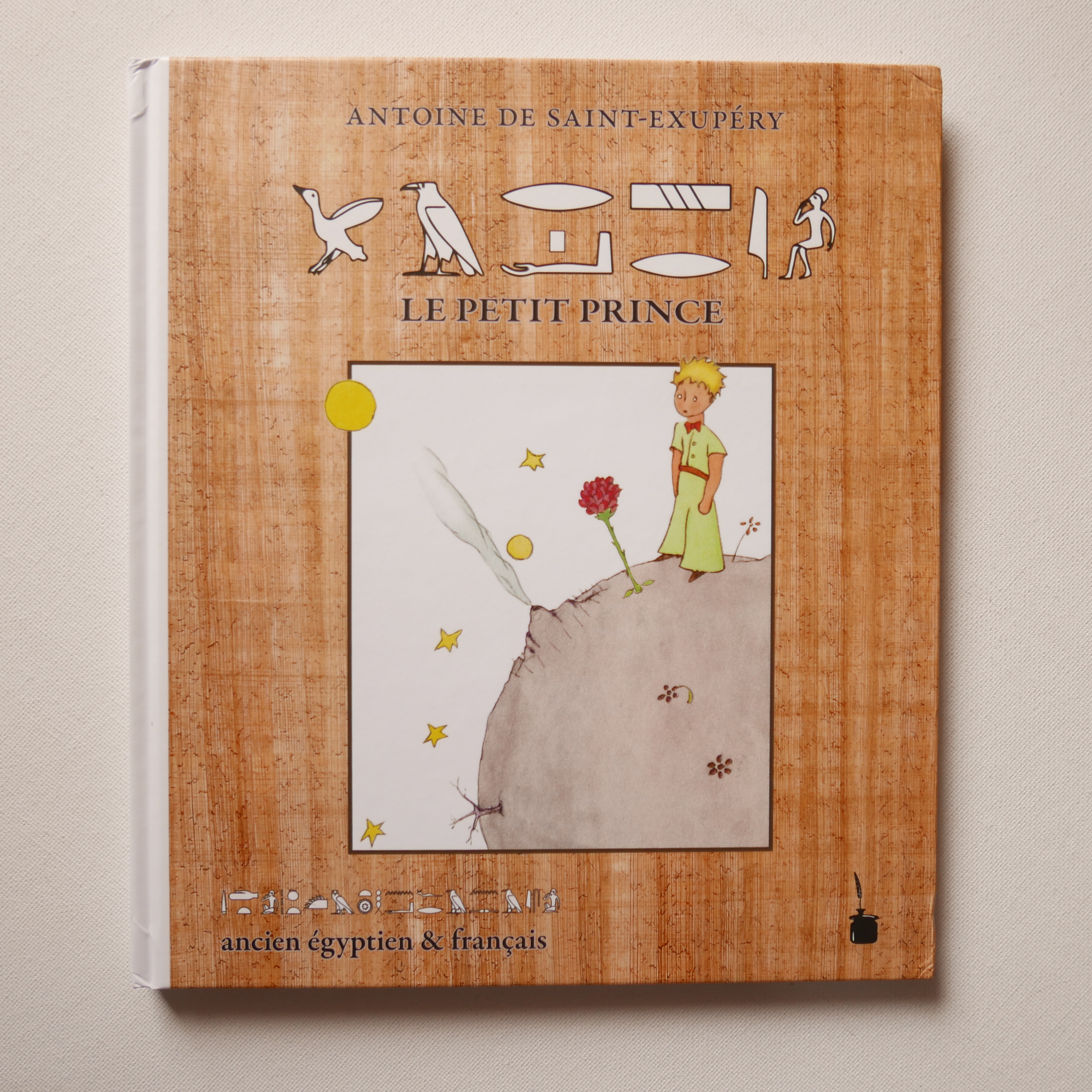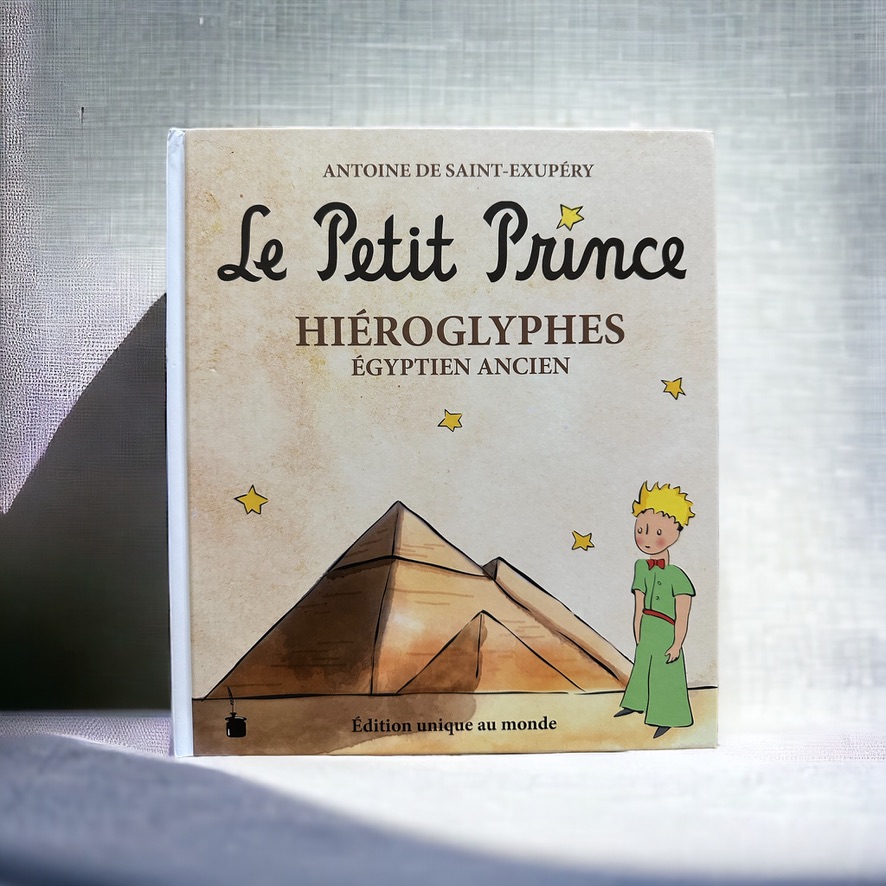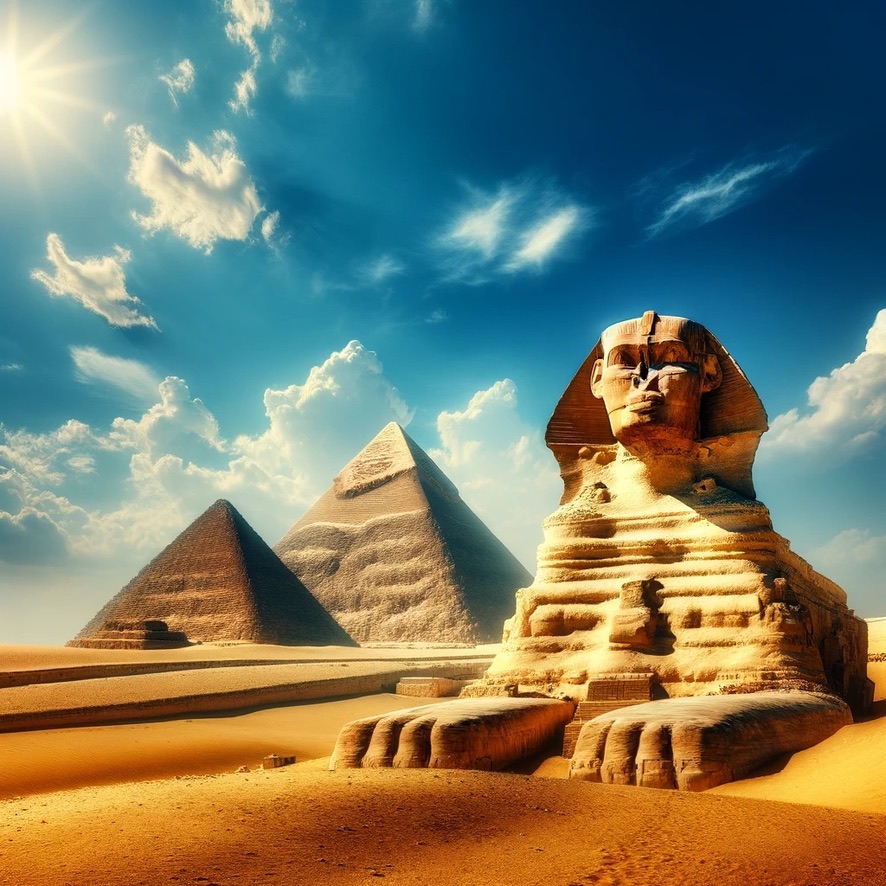
The original french text is also included.
Ancient Egyptian language is a branch of the Afro-Asiatic language family and played a critical role in the development of Egyptian civilisation, from the Predynastic period through the pharaonic and Greco-Roman periods, continuing in various forms until the early modern period. Over millennia, the Egyptian language evolved through several stages and used different writing systems, which are key to understanding Egypt’s rich history and culture. The Egyptian language’s legacy is profound, offering insight into the religious beliefs, administrative workings, and daily life of ancient Egyptians.
The most iconic Egyptian script is hieroglyphs. It is used for monumental inscriptions, religious texts, and decorative purposes. It consists of logographic and alphabetic elements. The decipherment of hieroglyphs by Jean-François Champollion in 1822, using the Rosetta Stone, marked a breakthrough in Egyptology, allowing scholars to unlock the vast records of ancient Egyptian civilisation.

Hieroglyphs, from the Greek words “hieros” meaning sacred and “glyphein” meaning to carve, are the script used by the ancient Egyptians for religious texts, monumental inscriptions, and other formal writings. This script is one of the earliest writing systems in the world and a significant component of Egypt’s cultural heritage. Hieroglyphic writing dates back to around 3200 BCE and was used throughout ancient Egypt’s history until the end of the Roman period in Egypt.
Hieroglyphs are a complex system comprising over 1,000 distinct characters. The script includes logograms (symbols representing words), phonograms (symbols representing sounds), and determinatives (symbols providing additional meaning or clarification but not pronounced).
This script is notable for its aesthetic beauty and intricate detail. Each symbol is not only functional but also artistic, often depicting animals, objects, or figures from nature and daily life, making the script deeply symbolic.

Hieroglyphic texts can be written in rows or columns, and the direction can be from left to right or right to left, depending on the orientation of the symbols. Readers can determine the direction of the text by the way the human or animal figures in the hieroglyphs are facing.


